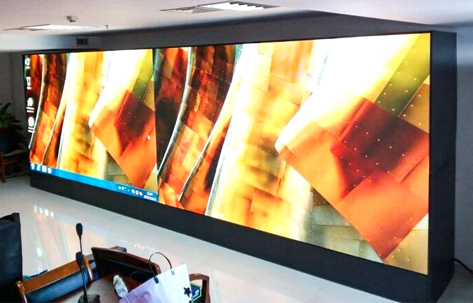source:Industry Trends release time:2022-10-25 Hits: Popular:led screen wholesaler

The shape of the TV is relatively fixed, like a "black box", with many parts shielded inside. Therefore, the idea of making TV transparent is simply to say that "all non-essential removed, leaving must be transparent", which also runs through the birth process of the whole MI transparent TV.
The first is the back of the TV. The back is almost always black and houses various components: T-CON boards, power strips, motherboards... These are not necessary to prevent the TV from becoming transparent.
But "remove" doesn't mean "throw away." Instead, you remove the components from the backplane and reintegrate them into an external mainframe, which is wired to the screen to make it work.
Such a solution is actually used in part of the MI mural TV, that is to remove the heavy redundant "burden" on the TV backplane, the original host on the backplane part of the external, and then achieve the ultimate light and light screen, the host external solution provides a prerequisite for TV transparency. The Mi Transparent TV does a similar but more complicated job of separating the console from the screen.
By eliminating redundant physical components, you can now focus on the screen itself. LCD(liquid crystal display) and OLED (OLED) are widely used in TV screens. Both of them can be transparent, but OLED has the innate advantage of being transparent because of its self-luminous properties.
To remind you of OLED's superiority over LCD, it's important to remember that OLED screens themselves are 'self-illuminating', meaning that each red, green or blue sub-pixel on the screen will glow on its own, without relying on an additional backlight source.
Only in this way can OLED screens dispense with modules such as liquid crystal layer and backlight layer, which are common in traditional LCD screens, to achieve higher color contrast and ensure that they are thin enough in shape.
This innate structure characteristics, but also to meet a lot of manufacturers want to make the display thin, even do bend, do fold demand.
But the real challenge for transparent TV is to make those millions of tiny pixels "transparent enough." Of course, we can take it for granted that as long as the substrate with higher light transmittance is selected, and the upper and lower cover plates, positive and negative poles are replaced by glass, light can easily pass through the panel and make it the same as glass.
Read recommendations:
big outdoor advertising screen Vendor
Wireless control scheme of LED electronic screen
Stage design of full-color LED display.P4.81outdoor /indoorled screen modules